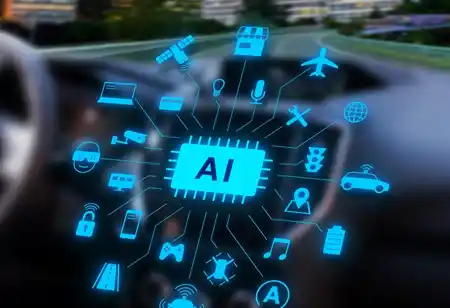THANK YOU FOR SUBSCRIBING
THANK YOU FOR SUBSCRIBING
Be first to read the latest tech news, Industry Leader's Insights, and CIO interviews of medium and large enterprises exclusively from Auto Tech Outlook

By
Auto Tech Outlook | Thursday, September 01, 2022
Stay ahead of the industry with exclusive feature stories on the top companies, expert insights and the latest news delivered straight to your inbox. Subscribe today.
Photonic integration and sound engineering will help autonomous vehicles to overcome their challenges.
FREMONT, CA: Long-haul trucks will be controlled by autonomous systems, which is a significant shift in the automotive sector. Big rigs invest a lot of time on the road, and they typically travel 95 percent of the time on well-maintained, restricted highways, which provide a safe environment for autonomous vehicles.
As the technology is polished and tested, full Level 4 autonomy will be available in a few years. Big rigs are expensive, and the cost savings from having robots drive straight through without stopping or sleeping could cover the cost of the new technology. But developers intend to keep a human in the truck to take the wheel when necessary, such as going off-highway to depots or navigating harsh conditions such as road crew-directed detours.
A rough road toward autonomy
These adjustments in direction are partly due to economic and technological constraints, but the most significant limitation may be human drivers' ability. By passing through the levels depicted in the sidebar, developers initially intended vehicle autonomy to move control from human drivers to robots. The original goal was Level 3 autonomy, with the robot driving and the human driver keeping their eyes on the road and hands on the wheel prepared to take over with little warning if necessary.
People, on the other hand, can get easily distracted even while driving a car. If people watch the automobile go, their attention is more likely to be drawn to their phone or another screen than to remain focused on the road.
The public has also been skeptical, especially after unpleasant nonfatal disasters like a self-driving car colliding with a bright-red fire truck halted on the road with its lights flashing. Many developers believe that Level 3 is a flawed concept as a result of these catastrophic accidents. Instead, many firms are anticipated to leap straight from Level 2 to Level 4, which needs the car to handle various circumstances without human aid.
Meeting manufacturing needs
Building manufacturing technology on the size and scale required for automotive use is significant for the photonics sector. The demands of the industry are high. Customers in the automotive industry need time to evaluate new products for safety and quality and bring a new product onto the production line a few years. They insist on high-volume, low-cost manufacture that can endure temperatures ranging from -40° to 80°C.
It takes both human and financial resources to develop a supply chain and automate production. Organizations can begin by developing internal products, then develop collaborations with contract manufacturers and others. They started at the chip level and worked their way up, performing die insertion, wire bonding, and other tasks. They moved more functionality into application-specific integrated circuits (ASICs) to reduce expenses and increase performance as their products developed.
See Also :- Top Construction Tech Solution Companies
 Copyright © 2025 AutoTech Outlook. All Rights Reserved | Privacy Policy | Subscribe | Sitemap | About us | Feedback Policy | Editorial Policy
Copyright © 2025 AutoTech Outlook. All Rights Reserved | Privacy Policy | Subscribe | Sitemap | About us | Feedback Policy | Editorial Policy 



